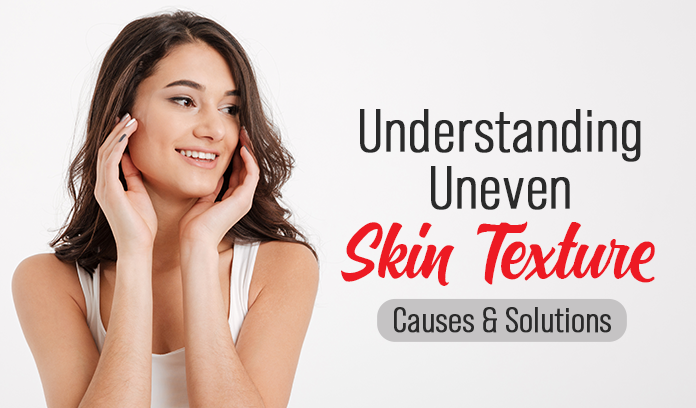Uneven skin texture is an increasingly common problem resulting from several factors that pollute the skin’s natural barrier.
This affects the skin’s smoothness and appearance.
From enlarged pores to rough patches and acne marks, understanding the causes of uneven skin texture is pivotal for finding effective solutions.
Here are a few contributing factors that lead to rough or uneven skin texture:
Acne
A major cause of uneven texture also happens to be acne.
When acne lesions or marks begin to heal, they tend to leave behind acne scars resulting in an uneven skin surface.
Moreover, poor skincare regimens such as lack of exfoliation and moisturization can also exacerbate this issue.
Acne scars and an oily skin surface lead to textual irregularities.
Environmental factors
Excessive air pollution, dust, and humidity in the air can cause changes in your skin’s texture.
Dirt accumulation causes your pores to enlarge and produce excess oil, thereby corrupting your natural skin barrier. This also leads to frequent breakouts due to bacteria production between the skin’s layers.
Excessive or harmful sun exposure
This isn’t breaking news. SPF will save you and your skin from aging signs.
Harmful sun rays can cause irregularities in your skin’s texture along with hyperpigmentation.
Over time, exposure to harmful UV rays can make skin less elastic affecting its growth and appearance.
The skin may even become thinned or thickened with a leathery texture.
Fortunately, there are a few steps one can implement to enhance or smoothen skin’s uneven texture.
Consistent skincare routines
A consistent skincare regimen is essential to repair and retain the skin’s natural barrier.
Gentle cleansing, regular exfoliation, and hydration can help promote skin cell turnover and protect its natural barrier.
Chemical exfoliation
Chemical exfoliants like AHAs and BHAs boost cell turnover to reveal smoother-looking skin.
Chemical exfoliation loosens the bonds between cells of the superficial layers of the skin. AHAs work on the skin’s surface to improve or repair its texture.
AHAs also work wonders for acne-prone skin by dissolving dirt clogged in pores and evening out the skin.
Textured Skin Treatment
For severe cases of uneven or textured skin, professional treatments like microdermabrasion or laser resurfacing can help improve skin appearance.
They are minimally invasive procedures that help improve skin tone and texture.
It typically involves a tool that helps sand away the skin’s outermost layer.
Conclusion
It is vital to understand and evaluate the causes of uneven skin texture, as it empowers us to take proactive steps toward achieving a smoother complexion.
By adapting to a comprehensive skincare routine based on our skin type and seeking necessary treatments, we can restore our original confidence as well as skin texture.

